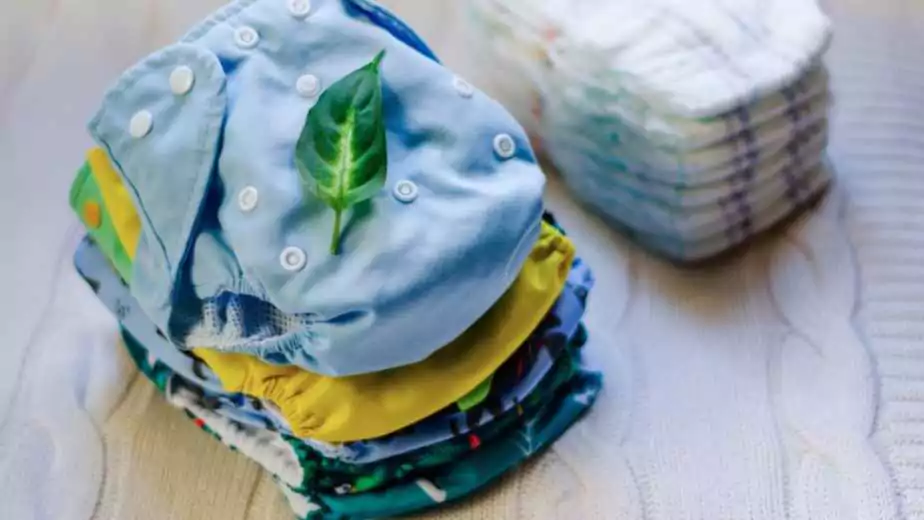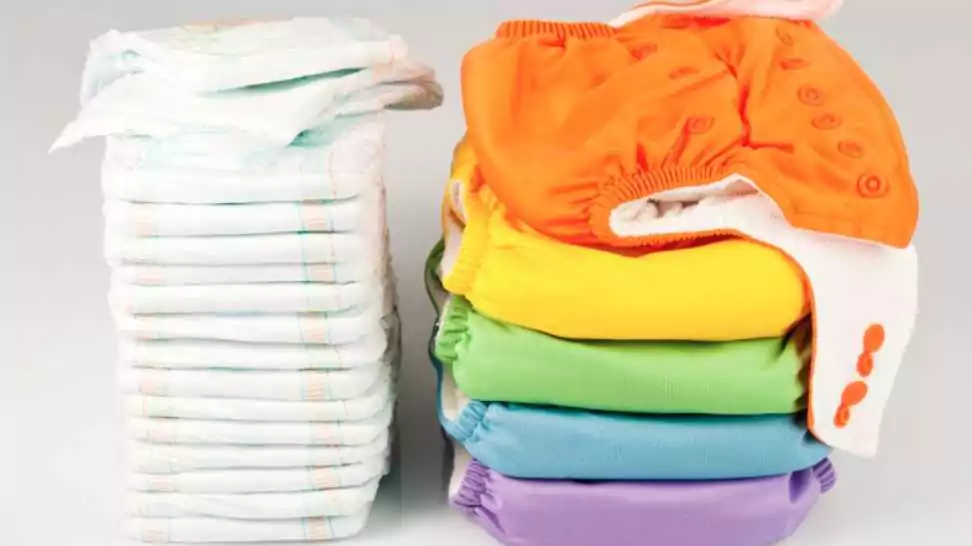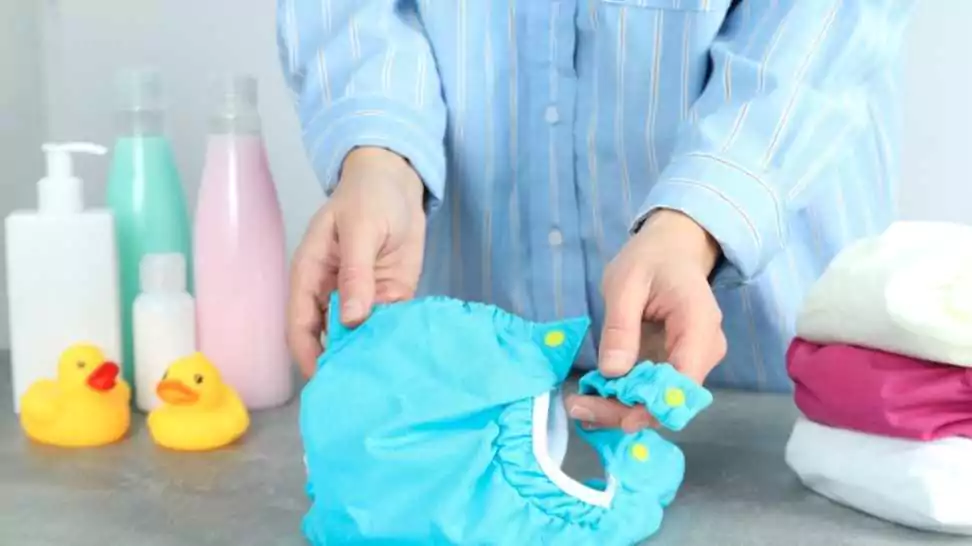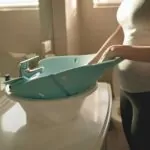Are Cloth Diapers Hygienic For Everyday Use?

In recent years, there has been a noticeable resurgence in the use of cloth diapers. This shift is driven by a growing awareness of environmental concerns and a desire for more natural parenting practices. However, with this trend comes an important question central to the health and well-being of infants: Are cloth diapers hygienic?
This blog aims to delve into this crucial question, examining the hygienic aspects of cloth diapers from various angles. We’ll explore the methods of cleaning and maintaining cloth diapers, compare their hygienic qualities with disposable diapers, and provide insights from health experts. Our objective is to offer a comprehensive understanding that helps parents make informed decisions for the health and comfort of their little ones.
1 Understanding Cloth Diapers
As we explore the hygienic aspects of cloth diapers, it’s crucial to first understand what they are, how they’ve evolved, and the different types available in the market. This foundational knowledge will help us better assess their hygienic properties and maintenance requirements.
What are Cloth Diapers?

Cloth diapers are reusable diapers made from natural fibres, man-made materials, or a combination of both. Unlike disposable diapers, which are thrown away after one use, cloth diapers can be washed and reused multiple times. They come in various shapes and sizes and can be adjusted to fit babies as they grow, making them a versatile and eco-friendly option for parents.
History and Evolution
The journey of cloth diapers is a fascinating one. Historically, they were simple cloth pieces, often made from cotton, that were folded and secured around a baby’s bottom. Over the years, these diapers have evolved significantly. The 20th century saw the introduction of more absorbent materials and the use of safety pins to secure diapers. Today, modern cloth diapers are far more sophisticated, featuring user-friendly designs, high-absorbency materials, and an array of stylish patterns and colours.
Types of Cloth Diapers

Understanding the different types of cloth diapers is essential for parents to choose the right kind for their baby and lifestyle:
- Prefolds: These are rectangular pieces of cloth divided into three sections, with the middle section being the most absorbent. They are versatile and require a separate waterproof cover but are economical and easy to clean.
- Fitted Diapers: Made entirely from absorbent material, fitted diapers conform to the baby’s body shape. They also require a waterproof cover and are known for their excellent absorbency.
- Pocket Diapers: A modern innovation, pocket diapers have a waterproof outer layer and a stay-dry inner layer, with a pocket in between for inserting absorbent pads. They are easy to use and adjust but require a bit more effort in washing and reassembling.
- All-in-Ones (AIOs): The most user-friendly, AIOs integrate both the absorbent layer and the waterproof outer layer in one piece. They are as convenient as disposable diapers but may take longer to dry after washing.
2 Hygiene Concerns with Cloth Diapers
In addressing the key question of whether cloth diapers are hygienic, it’s crucial to understand the common concerns associated with their use, how they compare to disposable diapers in terms of bacterial and germ exposure, and what experts say about their hygiene.
Common Hygiene Concerns
The use of cloth diapers often raises several hygiene-related questions:
- Bacterial and Germ Build-up: There’s a concern that cloth diapers may harbour more bacteria and germs due to inadequate cleaning or drying.
- Proper Sanitization: Ensuring cloth diapers are adequately sanitised in each wash cycle is a significant concern, as improper washing can lead to skin irritations or infections.
- Frequency of Changing: Parents might wonder if cloth diapers require more frequent changes than disposables to prevent rashes and maintain hygiene.
- Handling and Storage: Questions about the correct handling and storage of soiled cloth diapers until washing are common, as improper practices can lead to hygiene issues.
Bacterial and Germ Exposure Comparison
When comparing cloth and disposable diapers:
- Cloth Diapers: Proper washing and sanitising are crucial. If cleaned correctly, cloth diapers can be just as hygienic as disposables. The key is using the right amount of detergent, water temperature, and drying techniques to eliminate bacteria and germs.
- Disposable Diapers: While these are used only once, reducing the risk of long-term bacterial build-up, they are not without their hygiene concerns. For instance, the chemicals used in disposables can cause rashes and allergies in some babies.
Expert Opinions and Studies
Research and expert opinions play a pivotal role in understanding the hygiene of cloth diapers:
- Paediatric Recommendations: Many paediatricians acknowledge that when cloth diapers are washed and maintained correctly, they are a hygienic option. The American Academy of Paediatrics provides guidelines on diapering but does not prefer one type over the other regarding hygiene.
- Scientific Studies: Studies have shown that the hygiene of a diaper, cloth or disposable, depends more on the diapering practices than on the type of diaper used. Regular changing, proper cleaning, and ensuring the baby’s skin is dry are crucial in preventing diaper-related issues like rashes and infections.
- Environmental Impact: Some experts also highlight the environmental impact of disposable diapers as a factor in the cloth vs. disposable debate. While not directly related to hygiene, the environmental friendliness of cloth diapers can be a point of consideration for parents.
3 Proper Maintenance for Hygiene
Ensuring the hygiene of cloth diapers largely depends on how they are cleaned and maintained. Proper care not only keeps the diapers sanitary but also extends their lifespan. Here, we’ll outline detailed guidelines for cleaning cloth diapers, emphasise the importance of a regular washing routine, and suggest safe and effective detergents and cleaning methods.
Cleaning and Maintenance Guidelines
- Pre-Washing: Rinse off any solid waste before putting the diaper in the laundry. A diaper sprayer attached to the toilet can be very effective for this.
- Storing Before Washing: Keep the soiled diapers in a dry pail with a lid to contain odours and bacteria until laundry day. Avoid soaking as this can lead to mildew and odour issues.
- Washing Routine: Wash cloth diapers every 2-3 days to prevent bacterial growth and odour build-up. A longer delay can make stains harder to remove and can compromise the fabric’s quality.
- Wash Cycle: Use a heavy-duty wash cycle with warm water (around 130°F) to effectively clean the diapers. A cold pre-wash can help to remove stains.
- Choosing Detergents: Use a cloth diaper-safe detergent. Avoid fabric softeners and bleach, as they can deteriorate the fabric and reduce absorbency. Detergents free of fragrances and dyes are preferable, especially for babies with sensitive skin.
- Drying: Line drying in the sun not only saves energy but also helps remove stains and naturally sanitise the diapers. If using a dryer, choose a low heat setting to preserve the elasticity of the diapers.
Importance of Regular Washing Routine
- Prevents Bacterial Growth: Regular washing prevents the growth of bacteria and mould, which can be harmful to the baby’s skin.
- Maintains Diaper Integrity: Timely washing helps maintain the diaper’s absorbency and fabric integrity, ensuring they remain effective and comfortable for the baby.
- Odour Control: A consistent washing routine helps control odours, which can become problematic if diapers are left unwashed for too long.
Safe and Effective Cleaning Methods
Enzyme-based Cleaners: These can be used for tougher stains. They break down organic matter without damaging the fabric.
Baking Soda and Vinegar: For a natural approach, baking soda can be used in the wash to freshen and clean the diapers, while white vinegar in the rinse cycle can neutralise odours and soften the fabric.
Sanitization: Occasionally, a hot water wash or a small amount of bleach may be necessary for deep sanitization, especially in case of yeast infections or severe diaper rash.

4 Health Benefits of Cloth Diapers
While the primary focus when discussing cloth diapers is often their environmental impact and cost-effectiveness, it’s equally important to consider the health benefits they offer. In this section, we will delve into how cloth diapers can be beneficial for babies, particularly in preventing diaper rash and allergies, supported by insights from paediatricians and dermatologists.
Health Benefits for Babies

Reduced Exposure to Chemicals: Many disposable diapers contain chemicals and fragrances that can be harsh on a baby’s sensitive skin. Cloth diapers, especially those made from organic materials, offer a chemical-free alternative, reducing the risk of irritation.
Better Air Circulation: Cloth diapers are often more breathable than disposables. This improved air circulation can help keep the baby’s skin drier and healthier, reducing the risk of diaper rash.
Customizable Absorbency: Cloth diapers allow for adjustments in absorbency, which can be tailored to suit the baby’s needs, potentially reducing discomfort and skin issues.
Prevention of Diaper Rash and Allergies
- Diaper Rash: While diaper rash can occur with any type of diaper, the frequent changing typically associated with cloth diaper use and the absence of chemicals can lessen the risk. Additionally, the breathability of cloth can aid in faster healing when rashes do occur.
- Allergies and Sensitivities: Babies with sensitive skin or allergies may benefit from cloth diapers, as they are less likely to contain allergens and irritants found in some disposable diapers.
Insights from Paediatricians and Dermatologists
- Paediatrician Perspectives: Paediatricians often emphasise the importance of changing diapers regularly, regardless of the type, to prevent rashes and infections. However, some also note that cloth diapers can be advantageous for babies with particularly sensitive skin.
- Dermatologist Recommendations: Dermatologists who specialise in skin care may recommend cloth diapers as an alternative for babies who experience frequent rashes or have skin allergies, due to their natural and breathable nature.
- Studies and Research: Some studies suggest that the incidence of diaper dermatitis is similar in both cloth and disposable diapers. However, the type of rash may differ, with cloth diapers potentially leading to rashes due to wetness and disposables due to chemical irritants.
5 Environmental and Long-Term Hygiene Benefits
In addition to their health benefits, cloth diapers also offer significant environmental advantages and long-term hygiene benefits. This section will explore the environmental impact of cloth versus disposable diapers, the long-term hygiene advantages of using cloth diapers, and include real-life stories and testimonials from parents.
Environmental Impact of Cloth vs. Disposable Diapers
- Reduced Waste: Disposable diapers contribute significantly to landfill waste. It’s estimated that they can take up to 500 years to decompose. Cloth diapers, on the other hand, are reusable and significantly reduce this waste.
- Energy and Resource Usage: The production of disposable diapers consumes more water and energy compared to cloth diapers. Cloth diapers do require water and energy for washing, but overall, their environmental footprint is generally lower.
- Chemical Pollution: Disposable diapers often contain chemicals and plastics that can leach into the environment. Cloth diapers, especially those made from organic materials, have a much lower chemical impact.
Long-Term Hygiene Benefits of Using Cloth Diapers
- Skin Health: Over time, the gentle nature of cloth diapers can contribute to better skin health, reducing the risk of rashes and irritations caused by chemicals in disposables.
- Training and Awareness: Parents often find that children in cloth diapers may potty train earlier due to the increased awareness of wetness, which can be a hygiene benefit in the long run.
- Adaptability and Customization: The ability to customise absorbency and fit with cloth diapers can lead to better long-term hygiene management, particularly for children with specific needs or sensitivities.
Real-Life Stories and Testimonials from Parents
- Positive Experiences: Many parents share stories of switching to cloth diapers and noticing improvements in their babies’ skin health, alongside the satisfaction of making an eco-friendly choice.
- Challenges and Solutions: Parents also discuss the challenges they faced, such as finding the right washing routine, and how they overcome these challenges to successfully use cloth diapers.
- Community and Support: Testimonials often highlight the sense of community and support among cloth diapering parents, sharing tips, and advice, which can be invaluable for newcomers to cloth diapering.
6 Challenges and Solutions
While cloth diapers offer numerous benefits, it’s important to acknowledge and address the challenges that parents may face in using them. This section will explore common difficulties, provide practical solutions, and share tips and tricks from experienced cloth diapering parents.
Common Challenges
- Laundry Load: The increased laundry can be daunting for many parents, especially in the early days of adjusting to a new routine.
- Travel and Outings: Using cloth diapers while travelling or during outings can seem inconvenient due to the need for carrying soiled diapers.
- Night-time Leaks: Some parents struggle with finding the right combination of cloth diapers that can last through the night without leaks.
- Stain Removal: Dealing with stains can be a significant concern, especially for parents new to cloth diapering.
- Odour Management: Keeping the diaper pail odour-free is another common challenge.
Practical Solutions
- Establishing a Routine: Setting a regular washing schedule can help manage the laundry load effectively. A good routine minimises the time and effort required.
- Travel Tips: For outings, consider using hybrid diapers with disposable inserts or a wet bag for storing soiled diapers until you return home.
- Night time Solutions: Using diapers with higher absorbency, like fitted diapers with wool covers, can help prevent leaks at night.
- Stain and Odour Management: Sun-bleaching is an effective, natural method for removing stains. For odours, baking soda in the diaper pail and regular washing can help.
- Drying Diapers: Line drying not only helps with stain removal but also extends the life of the diapers. In damp climates, indoor drying racks can be used.
Tips and Tricks from Experienced Parents
- Start Small: Begin with a small collection of different types of cloth diapers to find out what works best for your baby.
- Stay Organized: Use a designated area for diapering supplies to streamline the process.
- Involve Partners: Sharing diapering responsibilities can make the process more manageable and enjoyable.
- Join Communities: Online forums and local groups can be invaluable resources for support and advice.
- Patience and Flexibility: It’s important to remember that there might be a learning curve, and being flexible and patient with the process can lead to success.
7 Wrapping Up
When maintained properly, cloth diapers can be a highly hygienic option for baby care. The key lies in adhering to a consistent washing routine, using appropriate detergents, and ensuring that the diapers are thoroughly cleaned and dried. It’s important to remember that, like with any diapering option, good hygiene practices are essential.
Choosing between cloth and disposable diapers is a personal decision that each family must make based on their circumstances, values, and preferences. We encourage readers to weigh the information presented, consider their lifestyle and resources, and make a decision that feels right for them and their baby. Remember, there is a community of parents and experts available to support you in your cloth diapering journey, and the benefits of your choice extend beyond just your family to the wider environment.
Community Q&A
About This Article
This article has been viewed 107 times.



